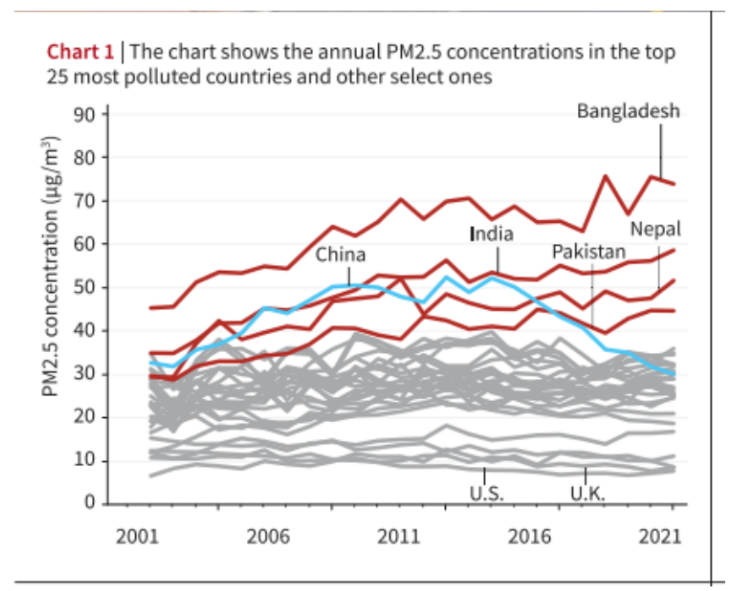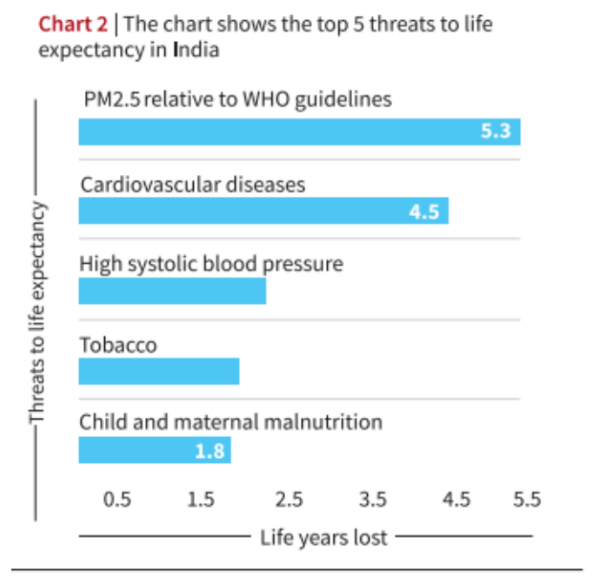Context:
Data from the Air Quality Life Index 2021 shows that failure to meet the World Health Organization (WHO)’s guidelines on reducing PM2.5 (particulate matter) pollution to 5 µg/m3 would cut global life expectancy by 2.3 years.
Particulate Pollution in South Asia:
- According to AQLI data, from 2013 to 2021, particulate pollution in South Asia surged by 9.7%, which is estimated to reduce life expectancy in the region by an additional six months.
- Bangladesh, India, Nepal, and Pakistan, where 22.9% of the global population lives, are the most polluted countries in the world.

Impact on Life expectancy:
- The average Indian resident is set to lose 5.3 years of life expectancy if WHO guidelines remain unmet.
- In contrast, cardiovascular diseases reduce the average Indian’s life expectancy by about 4.5 years, while child and maternal malnutrition reduces it by 1.8 years.

Most polluted States in India:
- Chart shows the most polluted States in India and the potential life expectancy loss if pollution levels do not meet WHO guidelines.
- In Delhi, the world’s most polluted city, 18 million people could lose 11.9 years of life expectancy relative to the WHO guideline and 8.5 years of life expectancy relative to the national guideline if current pollution levels persist.

![]() 4 Sep 2023
4 Sep 2023


